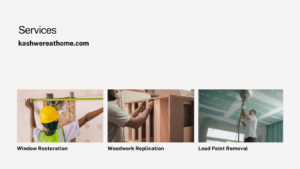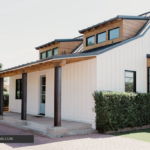Contents
- 1 Top Best Energy Efficient Home Upgrades: Smart Investments for a Sustainable Future
- 1.1 Introduction
- 1.2 Smart Thermostat Systems
- 1.3 High-Efficiency HVAC Systems
- 1.4 Insulation Upgrades
- 1.5 Energy Efficient Windows
- 1.6
- 1.7 Energy Efficient Home Upgrades LED Lighting Systems
- 1.8 Solar Power Systems
- 1.9 Water Conservation Systems
- 1.10 Energy Efficient Appliances
- 1.11 Smart Home Integration
- 1.12 FAQ Section
- 1.12.0.1 What energy efficient upgrade provides the fastest return on investment?
- 1.12.0.2 How much can I save annually with energy efficient upgrades?
- 1.12.0.3 Are there tax incentives available for energy efficient upgrades?
- 1.12.0.4 Which upgrade should I prioritize first?
- 1.12.0.5 How long do energy efficient upgrades typically last?
- 1.13 Conclusion
- 1.14 Additional Resources
Top Best Energy Efficient Home Upgrades: Smart Investments for a Sustainable Future
Introduction
In an era where environmental consciousness meets economic sensibility, energy efficient home upgrades have become more than just a trend – they’re a necessary investment for homeowners seeking to reduce their carbon footprint and monthly utility bills. The importance of energy efficient home upgrades cannot be overstated, as they not only contribute to environmental sustainability but also enhance home comfort and increase property value.
From simple DIY installations to comprehensive home improvements, there are numerous ways to make your home more energy efficient. This comprehensive guide explores the most impactful energy efficient upgrades available today, helping you make informed decisions about which improvements will provide the best return on investment for your specific situation Energy Efficient Home Upgrades .
Smart Thermostat Systems
Advanced Temperature Control
- Learning algorithms that adapt to your schedule
- Remote control via smartphone apps
- Zone-based temperature management
- Integration with other smart home devices
- Energy usage reporting and analytics
Installation and Setup
- Professional vs. DIY installation options
- Compatibility with existing HVAC systems
- WiFi requirements and connectivity
- Initial programming and optimization
| Pros | Cons |
|---|---|
| Average 10-15% savings on heating/cooling | Initial cost ($150-$500) |
| Remote access and control | Requires stable WiFi |
| Detailed energy usage data | Learning curve for setup |
| Automated temperature adjustments | May need professional installation |
High-Efficiency HVAC Systems
Modern Heating Solutions
- Heat pump technology
- Dual-fuel systems
- Variable-speed furnaces
- Geothermal options
- Smart ventilation controls
Cooling Innovations
- Variable-speed air conditioners
- Multi-stage cooling
- Solar-assisted cooling
- Ductless mini-split systems
- Energy recovery ventilators
- Energy Efficient Home Upgrades
| Pros | Cons |
|---|---|
| 20-40% reduction in energy costs | High initial investment ($5,000-$20,000) |
| Improved comfort control | Installation complexity |
| Lower environmental impact | Regular maintenance required |
| Longer system lifespan | May require ductwork modifications |

Insulation Upgrades
Types of Insulation
- Fiberglass batts and rolls
- Spray foam insulation
- Cellulose insulation
- Rigid foam boards
- Reflective/radiant barriers
Key Installation Areas
- Attic insulation
- Wall cavity insulation
- Basement/crawl space insulation
- Duct insulation
- Window and door insulation
| Pros | Cons |
|---|---|
| Up to 15% savings on heating/cooling | Installation costs vary ($1,000-$5,000) |
| Improved sound dampening | Some types require professional installation |
| Enhanced comfort | Can be disruptive during installation |
| Long-lasting solution | May require wall/ceiling access |
Energy Efficient Windows
Window Technologies
- Double and triple pane glass
- Low-E coatings
- Gas-filled windows
- Warm edge spacers
- Frame materials (vinyl, fiberglass, wood)
Installation Considerations
- Professional sizing and fitting
- Weather-appropriate ratings
- Solar heat gain coefficients
- U-factor ratings
- Installation timing and scheduling
| Pros | Cons |
|---|---|
| Up to 25% reduction in energy loss | High upfront cost ($300-$1,000 per window) |
| Improved home comfort | Professional installation required |
| Reduced UV damage | Long payback period |
| Enhanced home value | Potential structural modifications needed |
Energy Efficient Home Upgrades LED Lighting Systems
Lighting Technology
- Color temperature options
- Smart LED bulbs
- Motion sensors
- Dimming capabilities
- Lifetime ratings
Implementation Strategy
- Room-by-room replacement
- Fixture compatibility
- Control system integration
- Outdoor lighting solutions
| Pros | Cons |
|---|---|
| 75% less energy than traditional bulbs | Higher initial bulb cost |
| 25,000+ hour lifespan | Color matching can be challenging |
| Immediate energy savings | Some fixtures may need modification |
| Reduced heat output | Limited compatibility with old dimmers |
Solar Power Systems
Solar Panel Options
- Monocrystalline panels
- Polycrystalline panels
- Thin-film technology
- Hybrid solar-thermal systems
- Microinverter technology
Installation and Integration
- Roof assessment and preparation
- System sizing calculations
- Battery storage options
- Grid connection requirements
- Monitoring systems
| Pros | Cons |
|---|---|
| Significant long-term savings | High initial cost ($15,000-$25,000) |
| Federal and state tax incentives | Weather-dependent efficiency |
| Increased home value | Roof modifications may be needed |
| Energy Efficient Home Upgrades | Long payback period (5-10 years) |
Water Conservation Systems
Water-Saving Fixtures
- Low-flow showerheads
- Dual-flush toilets
- Smart irrigation systems
- Tankless water heaters
- Greywater recycling systems
Implementation
- Fixture replacement strategies
- Water pressure considerations
- Plumbing modifications
- Smart water monitoring
| Pros | Cons |
|---|---|
| 20-30% reduction in water usage | Variable installation costs |
| Lower water heating costs | Possible pressure adjustments needed |
| Immediate cost savings | Some systems require maintenance |
| Energy Efficient Home Upgrades | Learning curve for smart systems |
Energy Efficient Appliances
Kitchen Appliances
- ENERGY STAR refrigerators
- High-efficiency dishwashers
- Induction cooktops
- Smart ovens
- Energy-saving microwaves
Laundry Equipment
- High-efficiency washers
- Heat pump dryers
- Smart laundry systems
- Water-saving features
- Energy monitoring capabilities
| Pros | Cons |
|---|---|
| 10-50% energy savings | Higher purchase price |
| Water conservation | Installation requirements |
| Smart features and monitoring | Learning curve for operation |
| Improved performance | May need electrical upgrades |
Smart Home Integration
Control Systems
- Central home automation
- Energy monitoring platforms
- Automated scheduling
- Voice control integration
- Mobile app management
- Energy Efficient Home Upgrades
Device Compatibility
- Cross-platform integration
- Security features
- Remote troubleshooting
- Software updates
- Data analytics
| Pros | Cons |
|---|---|
| Centralized control | System complexity |
| Automated efficiency | Ongoing subscription costs |
| Usage optimization | Technical support needs |
| Remote management | Privacy considerations |

FAQ Section
What are the 10 energy conservation ideas?
- Adjust your combi boiler flow temperature to 60°C or below. …
- Heat the right places at the right times. …
- Be mindful of hot water use. …
- Don’t boil more water than you need. …
- Unplug your ‘Vampire Devices’ …
- Think about how you’re lighting your home.
What energy efficient upgrade provides the fastest return on investment?
LED lighting typically provides the quickest ROI, often paying for itself within 6-12 months through energy savings.
How much can I save annually with energy efficient upgrades?
Depending on the upgrades implemented, homeowners can save 20-50% on their energy bills, typically $200-$1,000+ annually.
Are there tax incentives available for energy efficient upgrades?
Yes, many regions offer federal, state, and local tax incentives, rebates, and credits for energy efficient improvements.
Which upgrade should I prioritize first?
Start with a home energy audit to identify the most impactful improvements for your specific situation, but insulation and air sealing typically offer significant returns.
How long do energy efficient upgrades typically last?
Most major upgrades (HVAC, windows, insulation) last 15-25 years, while LED lighting can last 10+ years, and smart thermostats 5-10 years.
Conclusion
Investing in energy efficient home upgrades is a smart strategy that pays dividends in multiple ways. Beyond the immediate benefit of reduced utility bills, these improvements enhance home comfort, increase property value, and contribute to environmental sustainability. While some upgrades require significant initial investment,
Energy Efficient Home Upgrades the long-term savings and benefits make them worthwhile. By carefully selecting and implementing these improvements, homeowners can create a more comfortable, efficient, and sustainable living space while contributing to a greener future.
Additional Resources
- ENERGY STAR – www.energystar.gov (product ratings and recommendations)






